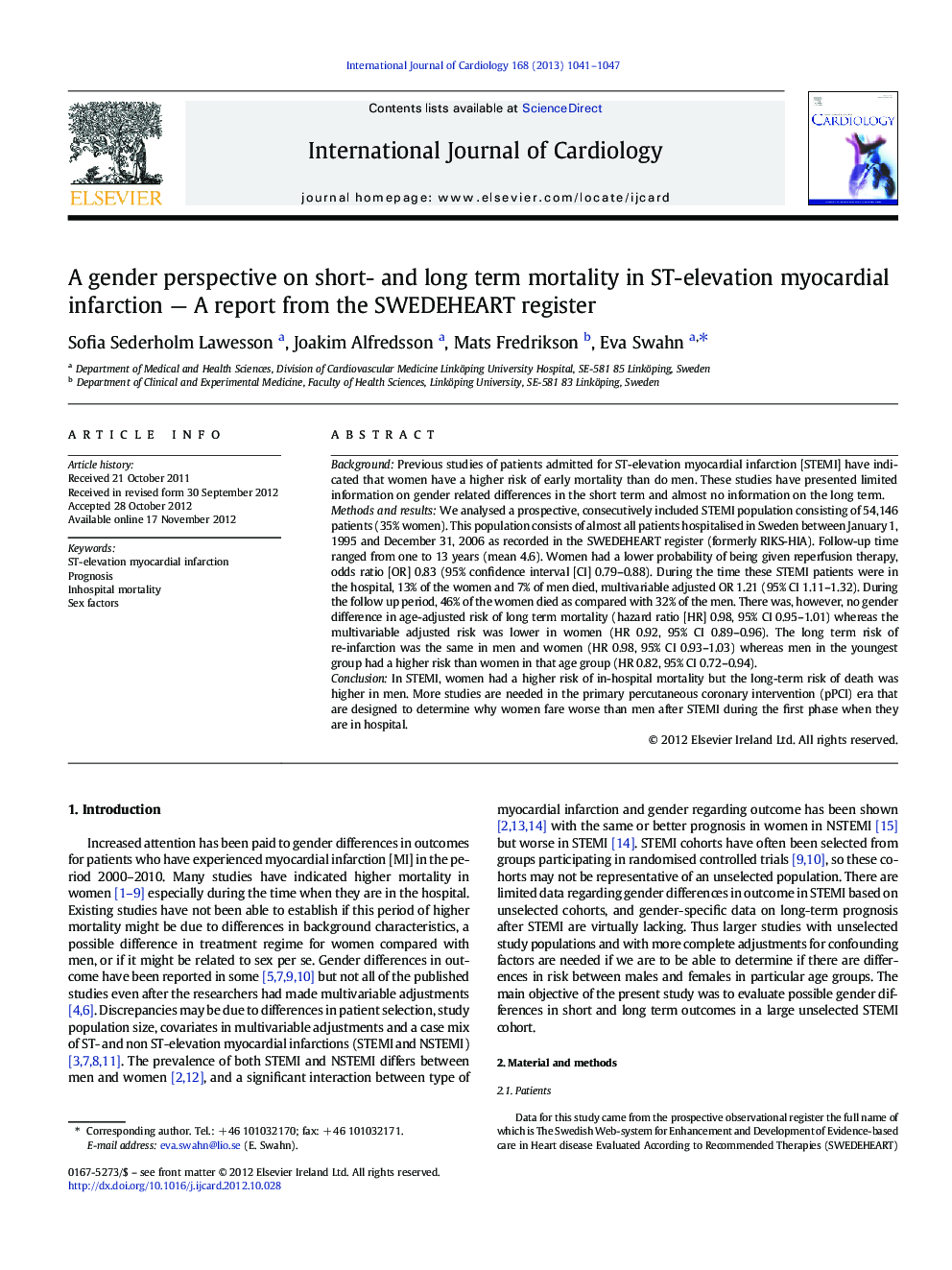| Article ID | Journal | Published Year | Pages | File Type |
|---|---|---|---|---|
| 5974184 | International Journal of Cardiology | 2013 | 7 Pages |
BackgroundPrevious studies of patients admitted for ST-elevation myocardial infarction [STEMI] have indicated that women have a higher risk of early mortality than do men. These studies have presented limited information on gender related differences in the short term and almost no information on the long term.Methods and resultsWe analysed a prospective, consecutively included STEMI population consisting of 54,146 patients (35% women). This population consists of almost all patients hospitalised in Sweden between January 1, 1995 and December 31, 2006 as recorded in the SWEDEHEART register (formerly RIKS-HIA). Follow-up time ranged from one to 13Â years (mean 4.6). Women had a lower probability of being given reperfusion therapy, odds ratio [OR] 0.83 (95% confidence interval [CI] 0.79-0.88). During the time these STEMI patients were in the hospital, 13% of the women and 7% of men died, multivariable adjusted OR 1.21 (95% CI 1.11-1.32). During the follow up period, 46% of the women died as compared with 32% of the men. There was, however, no gender difference in age-adjusted risk of long term mortality (hazard ratio [HR] 0.98, 95% CI 0.95-1.01) whereas the multivariable adjusted risk was lower in women (HR 0.92, 95% CI 0.89-0.96). The long term risk of re-infarction was the same in men and women (HR 0.98, 95% CI 0.93-1.03) whereas men in the youngest group had a higher risk than women in that age group (HR 0.82, 95% CI 0.72-0.94).ConclusionIn STEMI, women had a higher risk of in-hospital mortality but the long-term risk of death was higher in men. More studies are needed in the primary percutaneous coronary intervention (pPCI) era that are designed to determine why women fare worse than men after STEMI during the first phase when they are in hospital.
